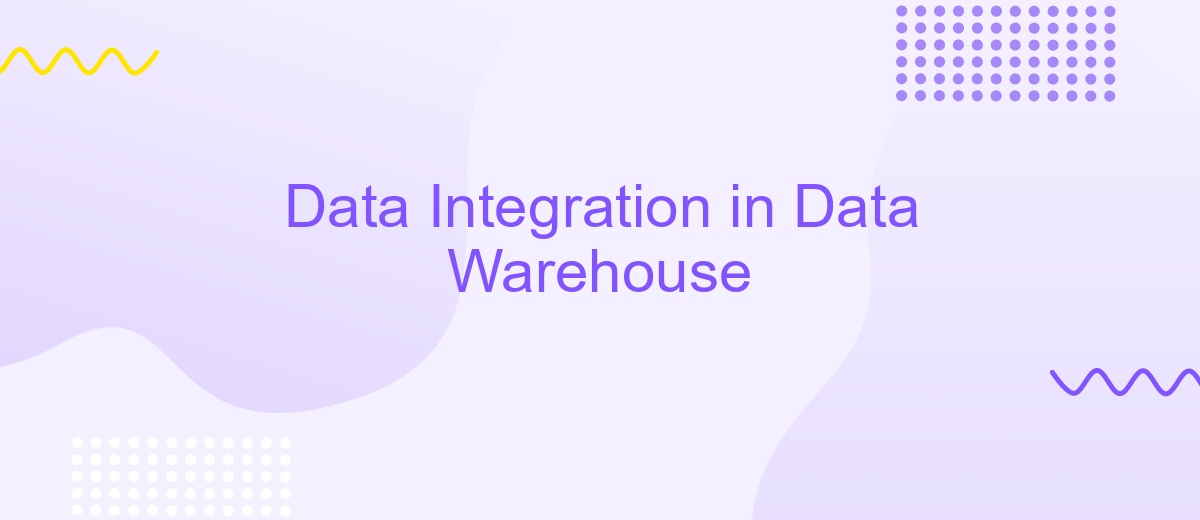Data Integration in Data Warehouse
Data integration in data warehouses is a critical process that involves combining data from diverse sources into a unified repository. This integration not only enhances data accessibility and consistency but also supports comprehensive analysis and decision-making. By streamlining data from multiple systems, organizations can achieve a holistic view of their operations, leading to more informed and strategic business insights.
Introduction
Data integration in a data warehouse is a critical process that involves combining data from various sources into a unified and cohesive repository. This integration is essential for businesses to gain comprehensive insights, improve decision-making, and enhance overall efficiency. By consolidating data from disparate systems, organizations can create a single source of truth, ensuring data consistency and accuracy.
- Combining data from multiple sources
- Ensuring data consistency and accuracy
- Improving decision-making processes
- Enhancing overall business efficiency
Modern data integration tools, such as ApiX-Drive, facilitate seamless data integration by automating the process and reducing manual effort. ApiX-Drive offers a user-friendly interface and supports a wide range of data sources, making it easier for businesses to synchronize and manage their data effectively. Leveraging such tools can significantly streamline the data integration process and ensure that the data warehouse remains up-to-date and reliable.
Data Integration Challenges

Data integration in a data warehouse environment presents multiple challenges, primarily due to the diverse nature of data sources and formats. One of the key issues is data inconsistency, where data from different sources may not align in terms of structure, semantics, or quality. This inconsistency can lead to significant discrepancies and errors in the integrated data, requiring sophisticated data cleaning and transformation processes. Additionally, the sheer volume of data that needs to be integrated can strain system resources and complicate the integration process, making it necessary to employ efficient data processing techniques and robust infrastructure.
Another critical challenge is real-time data integration, which demands continuous updates and synchronization across various systems. Ensuring data accuracy and consistency in real-time scenarios can be particularly daunting. Tools like ApiX-Drive can help mitigate some of these challenges by offering automated data integration services that simplify the process of connecting and synchronizing data from multiple sources. ApiX-Drive provides a user-friendly interface and pre-built connectors, reducing the technical complexity and time required for integration, thereby enabling organizations to focus more on data analysis and decision-making.
Data Integration Solutions

Data integration solutions are essential for consolidating data from diverse sources into a unified data warehouse, ensuring consistency and accessibility. These solutions facilitate seamless data flow, enabling businesses to make informed decisions based on comprehensive datasets.
- ETL (Extract, Transform, Load): This process involves extracting data from various sources, transforming it into a suitable format, and loading it into the data warehouse.
- Data Virtualization: This technology allows real-time data integration by creating a virtual layer that accesses data from multiple sources without physical consolidation.
- API Integration: Tools like ApiX-Drive simplify the integration process by automating data transfer between applications, ensuring up-to-date information across systems.
- Data Replication: This method involves copying data from one database to another, ensuring data consistency and availability.
Implementing these data integration solutions can significantly enhance the efficiency and accuracy of data management within a data warehouse. Services like ApiX-Drive offer user-friendly interfaces and robust automation capabilities, making it easier for businesses to streamline their data integration processes and maintain high-quality data across their operations.
Benefits of Data Integration in Data Warehouses

Data integration in data warehouses offers numerous benefits that significantly enhance the efficiency and effectiveness of data management. By consolidating data from various sources into a single, unified repository, organizations can achieve a comprehensive view of their operations, leading to better decision-making and strategic planning.
One of the key advantages of data integration is the improvement in data quality. When data from multiple sources is combined, inconsistencies and redundancies can be identified and resolved, resulting in more accurate and reliable information. This streamlined data can then be used to generate insightful reports and analytics.
- Enhanced data accuracy and consistency
- Improved decision-making capabilities
- Streamlined data management processes
- Better compliance with data governance policies
- Increased operational efficiency
Tools like ApiX-Drive simplify the process of data integration by automating the transfer of data between different systems and applications. This not only saves time but also reduces the risk of human error. By leveraging such services, organizations can ensure that their data warehouse remains up-to-date and relevant, providing a solid foundation for business intelligence and analytics.


Conclusion
In conclusion, data integration in a data warehouse is a critical process that ensures the seamless consolidation of data from various sources into a single, coherent system. This integration not only enhances data accuracy and consistency but also enables more efficient data analysis and reporting, which are crucial for informed decision-making in any organization. The complexity of integrating diverse data formats and sources necessitates robust strategies and tools to manage the process effectively.
Services like ApiX-Drive play a pivotal role in simplifying data integration tasks. By automating the transfer and synchronization of data between different systems, ApiX-Drive reduces the manual effort required and minimizes the risk of errors. This automation allows organizations to focus on leveraging their data for strategic insights rather than getting bogged down by the technicalities of data management. As data continues to grow in volume and complexity, the importance of efficient data integration solutions will only increase, making tools like ApiX-Drive indispensable for modern data warehousing.
FAQ
What is data integration in a data warehouse?
Why is data integration important for a data warehouse?
What are the common challenges in data integration?
How can automation help in data integration?
What are the best practices for data integration in a data warehouse?
Time is the most valuable resource for business today. Almost half of it is wasted on routine tasks. Your employees are constantly forced to perform monotonous tasks that are difficult to classify as important and specialized. You can leave everything as it is by hiring additional employees, or you can automate most of the business processes using the ApiX-Drive online connector to get rid of unnecessary time and money expenses once and for all. The choice is yours!

